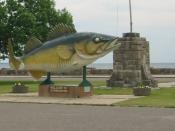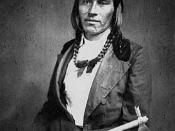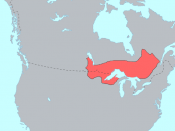How did the Ojibwa end up here?
The Ojibwa are an American Indian ethnolinguistic group centered around the upper great lakes and in Canada and the United States. The Ojibwa are a part of a group of central Algonquian, which includes the Ojibwa, Patauwtomi, Ottawa, Algonquin proper, Illinois and the Miami. They are distributed over nearly the entire region between the lower peninsula of Michigan and adjacent parts of Ontario and to the east. (http://www.whetung.com/)
Thousands of years ago, the Ojibwa were among several Indian tribes who lived on the Atlantic coast of North America. Then, about 500 years ago, many of these tribes began to migrate west as the eastern seaboard became colonized by the European settlers.
By the mid-1700s, the Ojibwa had settled in the region around Mille Lacs Lake in what is today Central Minnesota. They supported themselves by hunting, fishing and gathering from their land. But soon, the Europeans began heading west, too.
As they grew in numbers, so did their hunger for land. Before long, they began taking more tribal land and natural resources, changing the American Indians' lives forever.
The United States government, recognizing that tribal governments are sovereign, began making land treaties with them. In 1855, a famous Mille Lacs Band chief named Shawbashkung signed what was called "the treaty of peace and friendship" on behalf of his people. This treaty established a permanent home for the Band called the Mille Lacs Reservation.
As a part of that treaty, the Ojibwa promised not to harm or interfere with white settlers. During the Dakota Conflict of 1862, when some Ojibwa joined the fight against the whites, the Mille Lacs People kept their promise to the United States government, and even protected white settlers. Their good conduct gave them non-removable status with the Federal...


